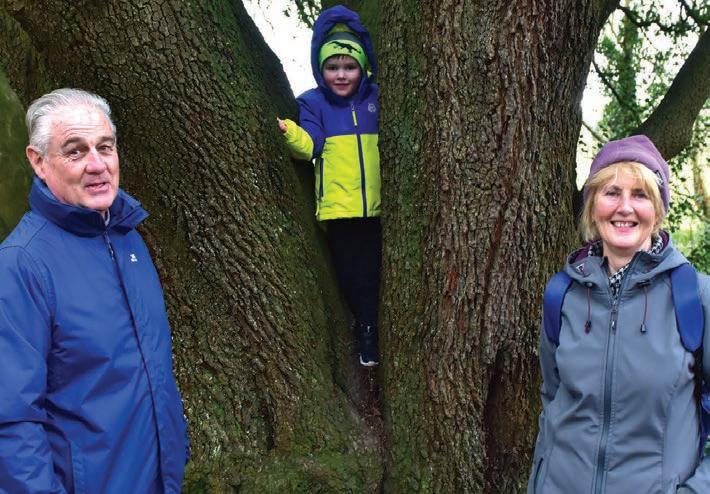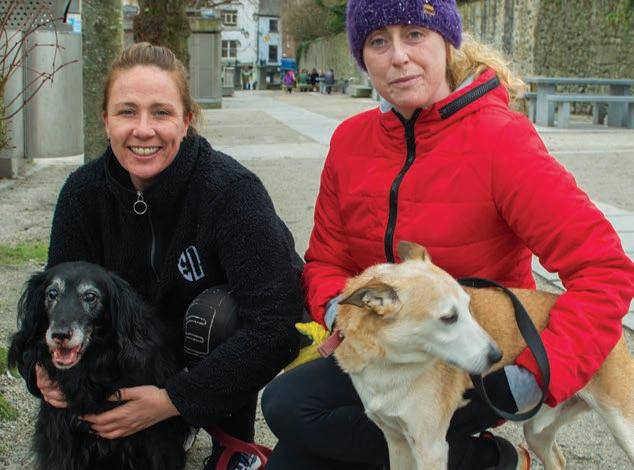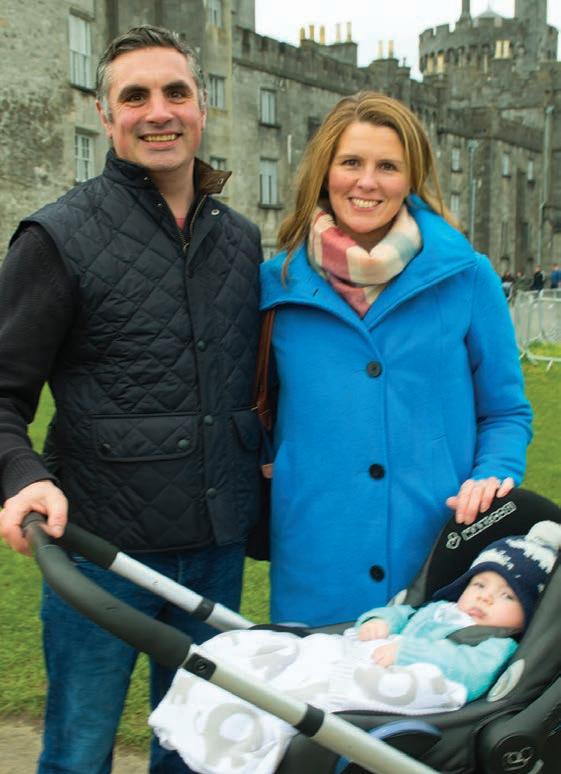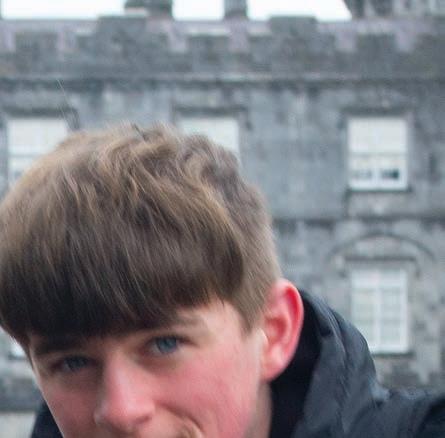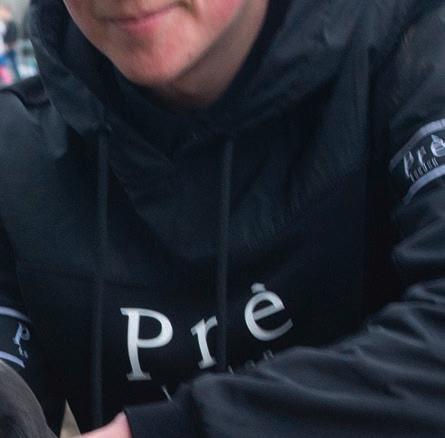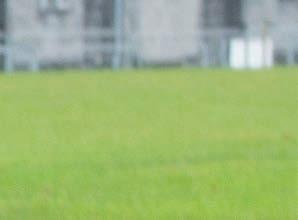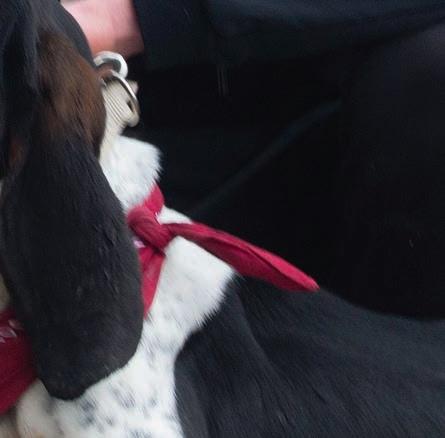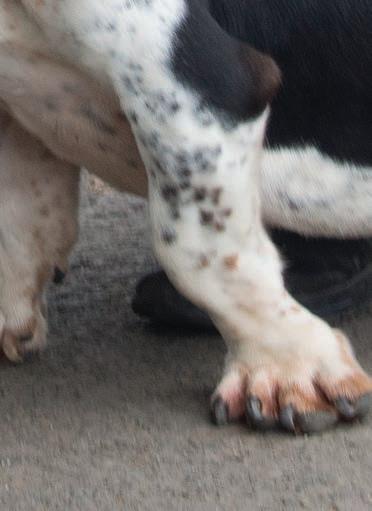
32 minute read
John Ellis
Cigarettes still kill 6,000 of us a year
BY JOHN ELLIS
Advertisement
FINANCIAL ADVISOR
IRELAND, though a recognised global leader in tobacco control, still has an unenviably statistic that one in every two smokers will die from a tobacco-related disease, and, according to the HSE, nearly 6,000 people will die in Ireland each year from smoking-related illnesses. e Healthy Ireland Survey 2021, which represents a detailed insight of a time interval during which necessary Covid19 restrictions had a signi cant impact on the health and wellbeing of the people of Ireland, found 16% of the population smoke daily and 2% occasionally. And, for the rst time, 45 to 54-year-olds are the most likely age group (24%) to smoke, with an increase of 6% since 2019.
But it’s not all bad news. A total of 27% of those who attempted to quit in the last 12 months were successful and, overall, less people are smoking now compared to ve years ago with the rates of smoking among 25 to 34-year-olds (20%) having declined by 6% since 2019. is was the age group with the highest prevalence of smoking in each previous survey.
Karen Gallagher, Interim Head of Proposition at Royal London, says:“Each year thousands of people throughout Ireland aim to give up smoking, with the beginning of a new year seen by many as the perfect time to jumpstart their health goals. While we all know that quitting smoking isn’t easy, the Healthy Ireland report shows the prevalence of smoking in Ireland is reducing as more people successfully go tobacco-free.”
Beyond the physical health advantages of quitting there are signi cant nancial bene ts to be had as smoking can double the cost of life and serious illness cover.
Look at this comparision table comparing smoker rates with non-smoker rates from Royal London as an example.
Let’s assume you are currently a smoker and will be 45 this year. You will pay over €18,000 more in premiums than a non-smoker will for the same level of cover — €300,000 over the next 25-years.
And the cost of serious illness cover rises even more steeply with €68,000 more being paid than a non-smoker for €300,000 over a 25-year term.
Speaking about the cost analysis, Ms. Gallagher says:“ e price di erential here is quite substantial. Our experience is that, while many people expect smokers to pay more in premiums, many don’t realise how much more it adds up to over the lifetime of the policy.”
Imagine further that in 12 months’ time you have not smoked and intend never to smoke again, this includes the use of e-cigarettes and nicotine replacement products such as patches or chewing gum and you have lifecover and/or serious illness cover in place you could potentially get a signi cant reduction in the cost of your policy premiums.
Financial advisors nd that many potential clients who have become non-smokers since taking out a policy have never had the plan reviewed regarding current levels of cover and premiums and so many were and are still losing signi cant savings each year.
I recommend that you get in touch with your Financial Broker to see if you can avail of more competitive rates and start saving money on your life and/or serious illness plans immediately. is may entail a new application for lifecover, even a medical and a smoker test called a ‘cotinine test’ where they take a sample of your saliva and run a test to see if there is nicotine in your system.
It will take a small amount of your time but it could add signi cantly to your bottom line.
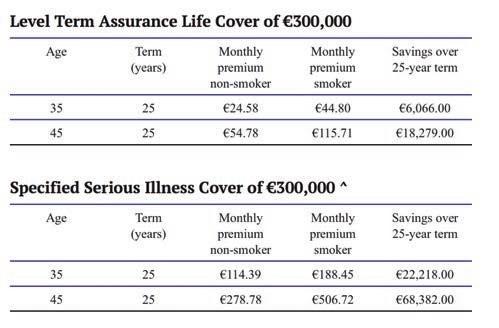
john@ellis nancial.ie 086 8362633.
Community Group
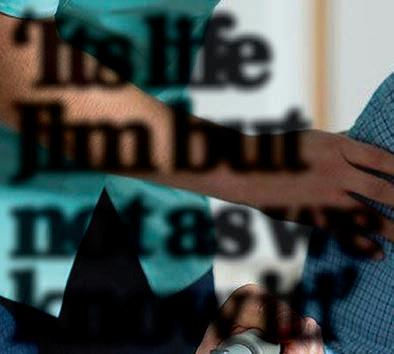
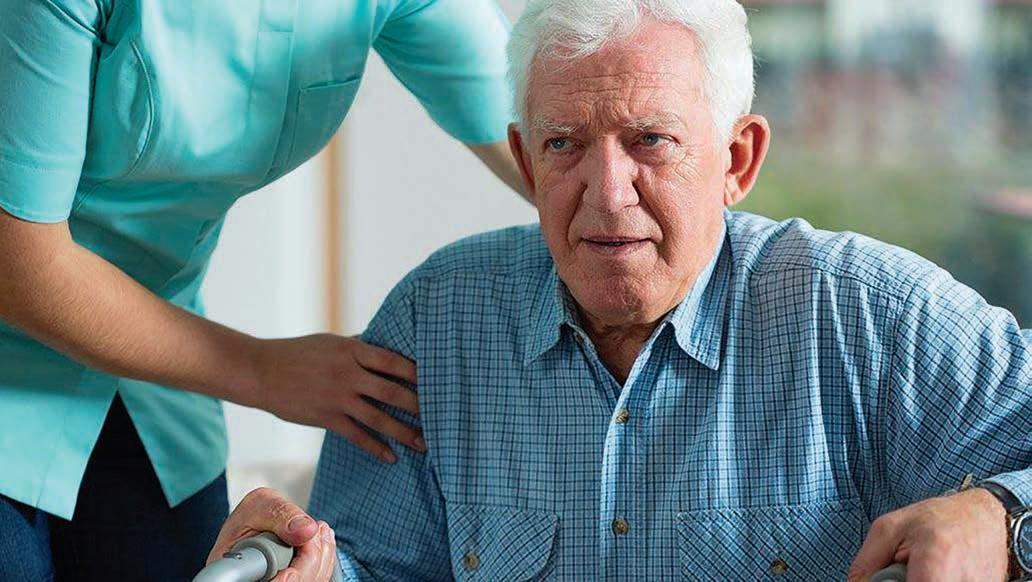
DURING months of ‘the Pandemic’ the way we went to the doctor changed dramatically. We didn’t get to see him face to face. No thermometer placed in your mouth and for us men no nger where the sun doesn’t shine! And that was the only welcoming relief.
It seems science has now developed for your local GP to look down your throat or feel the tummy down the telephone line! God be with the days you would get a big spoon of the syrup, a goodnight sleep and whatever was ailing yah was out of you like a shot the following morning.
I’m sure we have all seen reports about how populations across the Globe are ageing and that by 2031 the population over 65 in Ireland will have increased to over 1 Million (source: CSO 2018) is will ultimately lead to increases in demand for homecare and health care services. 71% increase in the number of people who will require homecare packages 38% increase in demand for GP visits or phone calls, if I had only kept those Eircom shares that helped light the re some years back. So, what can be done to ensure senior members of our society can continue to access the necessary support they require? You have guessed it in one …. We are going on line! Its is called Smart Care
So, what is Smart care?
Smart care empowers seniors to live independent, healthy and active lives in their own homes as well as providing their families with peace of mind.
Its smart because it: Provides services designed to meet the speci c needs of each and every customer, combines homecare, healthcare and sensor enabled 24/7 remote assistance to provide better and more a ordable support, when required. Uses technology to enhance the level of reassurance, whilst reducing costs at the same time.
We explored a bit more to understand this new service. ey provide a service called remote assistance that uses the latest smart home technology. It uses a small hub, a bit like a modem, that connects discrete smart sensors, placed in the home to their 24/7 Remote Assistance team. Included in their standard pack is the hub, 2 motion sensors, a door sensor and a wrist worn fall detector, which doubles as a panic button. e sensors notify their Remote Assistance team should any of their customers require immediate assistance. Should this occur they give their customer a quick call to check that everything is okay. If their customer tells them they are not okay, or if they don’t answer, they then contact a family member or another nominated person. e remote assistance service costs €9 per week and also includes the cost of the technology. And here comes the catch! eir service works a bit like a mobile contract, in that customers would need to sign up to an 18-month contract. eir remote assistance service works in tandem with their homecare teams to provide more comprehensive support. ey say that by combining homecare and remote assistance, their customers often need less homecare hours so reducing how much customers would need to pay. In addition, all their customers also get priority access to their healthcare services provided by their teams of 24/7 GPs and Nurses, as well as appointments with Counsellors, Physiotherapists, footcare specialists and dieticians.
Okay, we are having a little bit of fun about this Smart Care. But let’s be honest it is the future of our Senior Health care. So, you will have to get use to saying AWAHHH down the Phone to your GP from now!
Its life Jim but not as we know it!

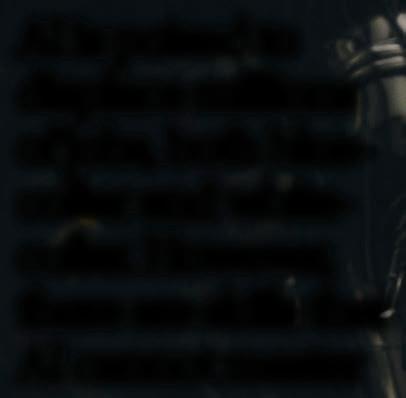
ARTIFICIAL Intelligence (AI) can perform many tasks better than people can, at essentially zero cost. is simple fact is poised to generate tremendous economic value but also to cause unprecedented job displacement — a wave of disruption that will hit blue- and white-collar workers alike.
In the future, AI will be doing everything from underwriting our loans to building our homes, and even hiring and ring us. is transformation of how work gets done will not only result in severe unemployment, but potentially ignite a host of social problems, including depression, suicide, substance abuse, widening inequality, and social unrest.
So where does that leave us? What are the jobs that AI can and cannot displace? What is the future of work? e jobs most at risk of automation by AI tend to be routine and entry-level jobs. AI’s main advantage over humans lies in its ability to detect incredibly subtle patterns within large quantities of data.
Take the example of loan underwriting. While a human underwriter will look at only a handful of measures when deciding whether to approve your insurance application (your net worth, income, home, job, and so on), an AI algorithm could take in thousands of variables — ranging from public records, your purchases, your healthcare records, and what apps and devices you use (with your consent) — in milliseconds, and come up with a far more accurate assessment of your application.
Such algorithms will displace routine white-collar work easily, just as software has steadily taken over routine white-collar tasks, such as bookkeeping and data entry.
So, what can AI not do? ese are the three capabilities where I see AI falling short, and that AI will likely still struggle to master even in 2041: 1. Creativity. AI cannot create, conceptualise, or plan strategically. While AI is great at optimising for a narrow objective, it is unable to choose its own goals or to think creatively. Nor can AI think across domains or apply common sense. 2. Empathy. AI cannot feel or interact with feelings like empathy and compassion. erefore, AI cannot make another person feel understood and cared for. Even if AI improves in this area, it will be extremely di cult to get the technology to a place where humans feel comfortable interacting with robots in situations that call for care and empathy, or what we might call “human-touch services.” 3. Dexterity. AI and robotics cannot accomplish complex physical work that requires dexterity or precise hand-eye co-ordination. AI can’t deal with unknown and unstructured spaces, especially ones that it hasn’t observed.
What does all this mean for the future of jobs? Jobs that are asocial and routine, such as telemarketers or insurance adjusters, are likely to be taken over in their entirety. For jobs that are highly social but routine, humans and AI would work together, each contributing expertise.
For example, in the future classroom, AI could take care of grading routine homework and exams, and even o ering standardised lessons and individualised drills, while the human teacher would focus on being an empathetic mentor who teaches learning by doing, supervises group projects that develop emotional intelligence, and provides personalised coaching.
For jobs that are creative but asocial, human creativity will be ampli ed by AI tools. For example, a scientist can use AI tools to accelerate the speed of drug discovery.
Finally, the jobs that require both creativity and social skills, such as strategy-heavy executive roles, are the ones where humans will shine.
While it’s clear that there are a lot of lines of work that AI will struggle to master — and thus would be safer for workers to pursue for their careers — these alone won’t prevent a disaster for the legions of workers displaced from roles that will be easier for AI. at said, AI will liberate us from routine work, give us an opportunity to follow our hearts, and push us into thinking more deeply about what really makes us human.

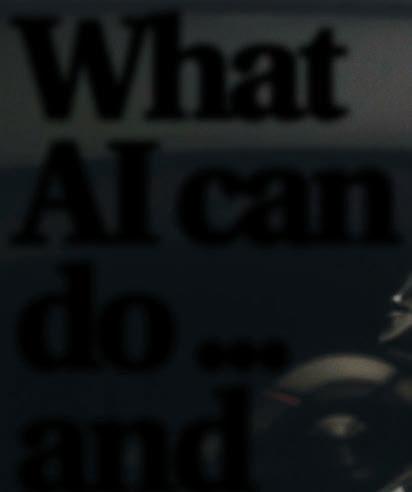
What AI can do ... and not do
AI is poised to displace millions of jobs, both bluecollar and whitecollar. However, there are skills that AI cannot master
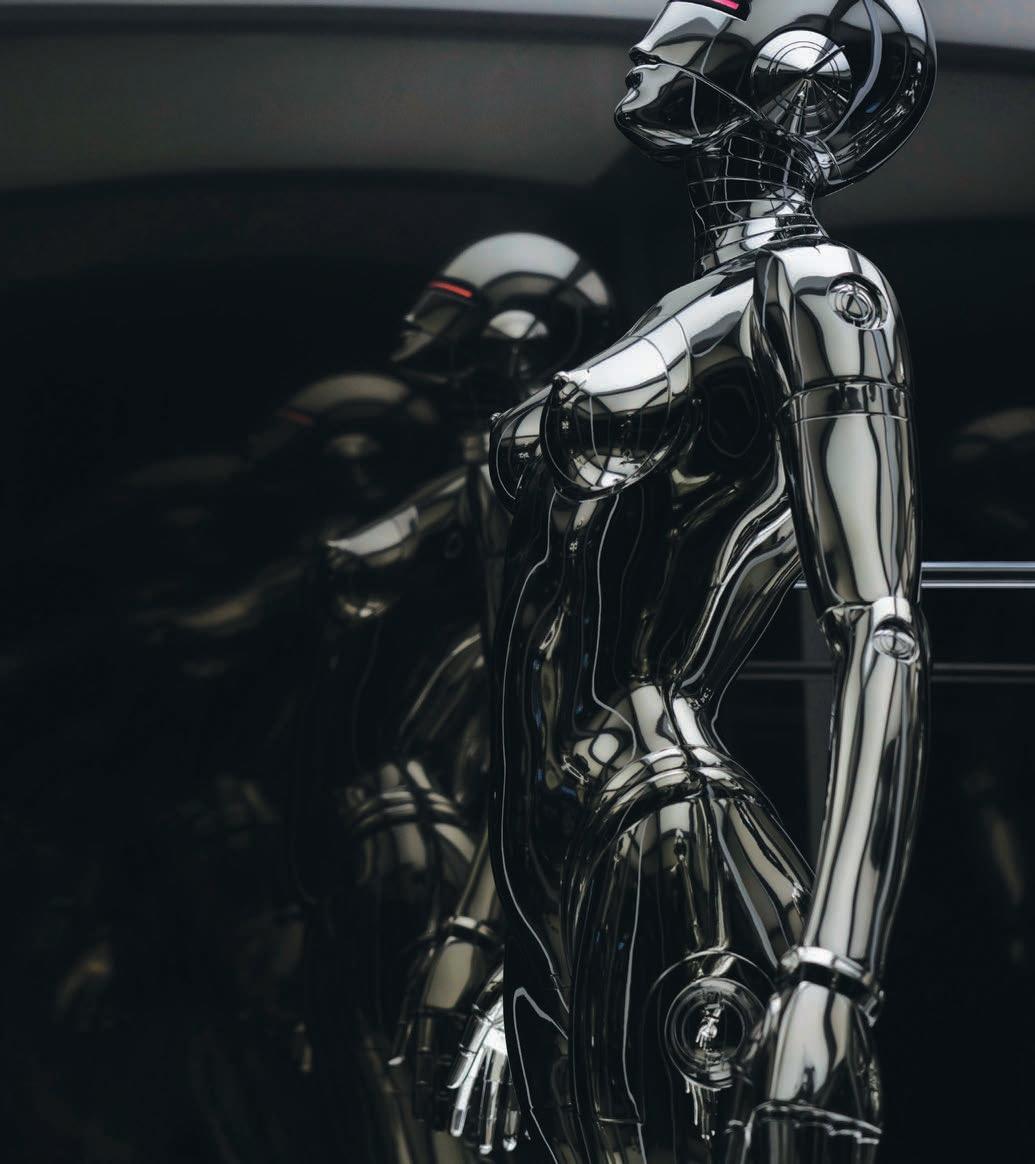


* Excerpt adapted from AI 2041 by Kai-Fu Lee and Chen Qiufan. Copyright © 2021
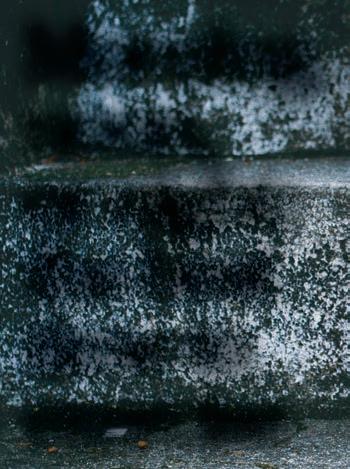
RESEARCHERS have extensively explored whether timeof-day a ects exercise bene ts and performance. ough morning workouts may be optimal for circadian rhythms, afternoon exercise tends to be slightly more e cient. Overall, given the immense bene ts of exercise, the best time to work out for most people is whenever they can t it into their schedules.
A key part of starting to exercise is choosing when to work out. Morning, afternoon, or evening: Which time is best? Scientists have studied this dilemma extensively.
For novice exercisers, morning workouts are often the most dreaded. Trading a cozy, nurturing bed for a sterile, unforgiving tness center can be a rude awakening to say the least. But morning workouts have their advantages. Challenging the body triggers the release of endorphins, uplifting one’s mood following exertion. ese chemicals, along with a individuals more alert in the morning and more tired at night, hopefully resulting in more sleep and improved health outcomes.
But alas, early exercisers may not be able to achieve peak performance. Sti er muscles, fewer stored energy reserves from overnight fasting, and a slightly cooler body temperature in the morning add up to hamper exercise output. erefore, more avid exercisers might prefer working out in the afternoon.
Exercise itself may also be more e cient in the afternoon. A small, 12-week study focusing on pre-diabetic and diabetic men found that afternoon training produced slightly more bene cial metabolic e ects and resulted in a little more fat loss compared to morning training. e advantages, however, were marginal.
Finally, some folks may decide to work out later in the evening. Studies centred around this time of day tend to focus on whether or not nightly exercise negatively impacts sleep quality. Gathered research suggests it does not and, instead, actually improves sleep. is nding comes with a big asterisk, however. Intense exercise performed within an hour of one’s bedtime absolutely will make it more di cult to fall asleep. For this reason, most exercise experts recommend at least 90 minutes of downtime between the conclusion of an exercise session and attempting to fall asleep.
At the end of the day, whether morning, afternoon, or evening, it is optimal if exercise timing remains somewhat consistent, research has found.
So, taking everything into account, when is the best time to exercise? ere actually is a straightforward answer! If you’re not about to go to sleep, if you’ve got some free time on your hands, and if you haven’t already exercised today, the best time to exercise is now.
Morning, noon, or night: the best time to exercise
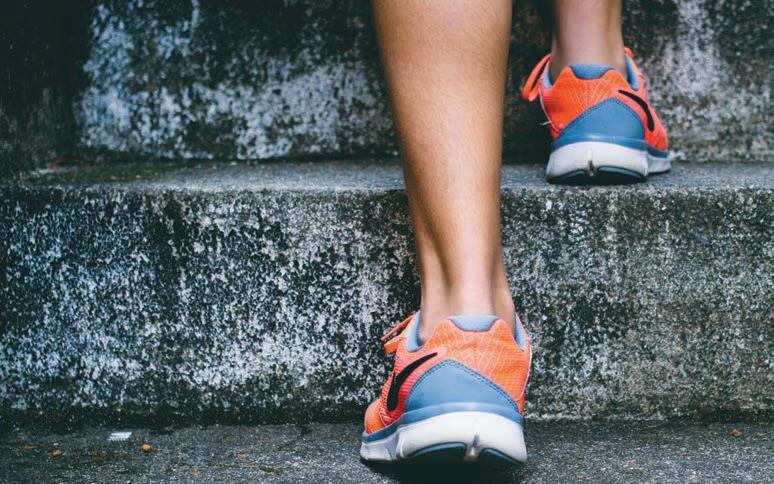
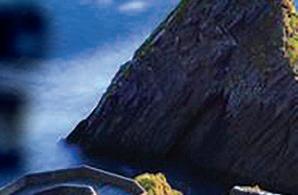
IF you fancy doing a road trip around Ireland, your own wonderful country, there are two great ways you can get around on these road trips. You can rent a car and stay at hotels or Airbnbs along the way. Or you can rent a camper van and have a self-contained place to stay. Both have their pros and cons.
Renting a camper van is a unique and awesome way to experience Ireland, but it can also cost more than a hotel and you’ll need to be prepared to cook your own food and nd a shower and facilities, when needed. Also, as we know, many of our roads are quite narrow.
Let us now look at driving the Wild Atlantic Way which can take between 10 and 14 days depending on stopovers and such, with, say, Kinsale being your starting point and nished the holiday in Inishowen. at’s a distance of 2,500 km. e Wild Atlantic Way is one of the most famous and most epic road trips in all of Ireland. Starting in Kinsale in Co Cork and ending in the charming town of Inishowen in Donegal, the Wild Atlantic Way is a road trip that takes you through Ireland’s spectacular west coast.
It stretches 2,500 km in length which makes it the longest de ned coastal route in the world!
You can visit the Wild Atlantic Way in around 10 days at a quicker pace, but if you want to really enjoy it and take advantage of all of the route, then two weeks is a better time period. e amazing thing about this drive is the epic views on every turn.
From dramatic cli s, typical Irish green rolling elds, epic mountains and endless charming Irish towns, the Wild Atlantic Way road trip truly o ers everything you want. ere are so many amazing places to stop and see along the way, but a few highlights would include, the Cli s of Moher, the Ring of Kerry and the town of Killarney, the Dingle Peninsula, Mizen Head which is Ireland’s most South Westerly point, and Achill Island among many other amazing sights! ere are lots of great places to stay in Ireland along the Wild Atlantic Way, but on this road trip, it’s de nitely worth renting a campervan and wild camping at some amazing places in Ireland. Wake up to stunning beach sunrises, epic cli views, charming lakes and other unique wild camping spots in Ireland! e wild Atlantic with its unrestrained and untameable tides and storms has continuously been moulding the west coast of Ireland.
With a constant meeting of water and land, a deeply indented and wild terrain has emerged with towering cli s, spellbinding bays and beaches, mystical islands, always changing and never reaching the end. In the isolation or perhaps expressed in a di erent way living near and with the Atlantic at your doorstep has ensured that old traditions and the Irish language have been preserved.
A trip along the Wild Atlantic Way is also an encounter with the past.

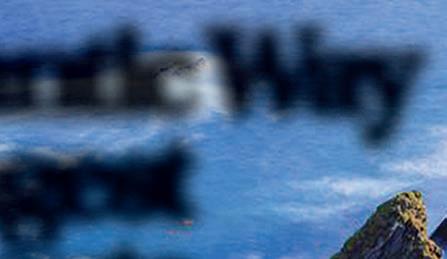
Wild Atlantic Way is the longest coastal route in the world!
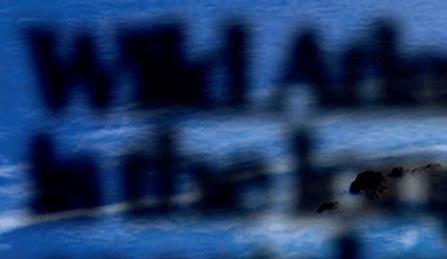
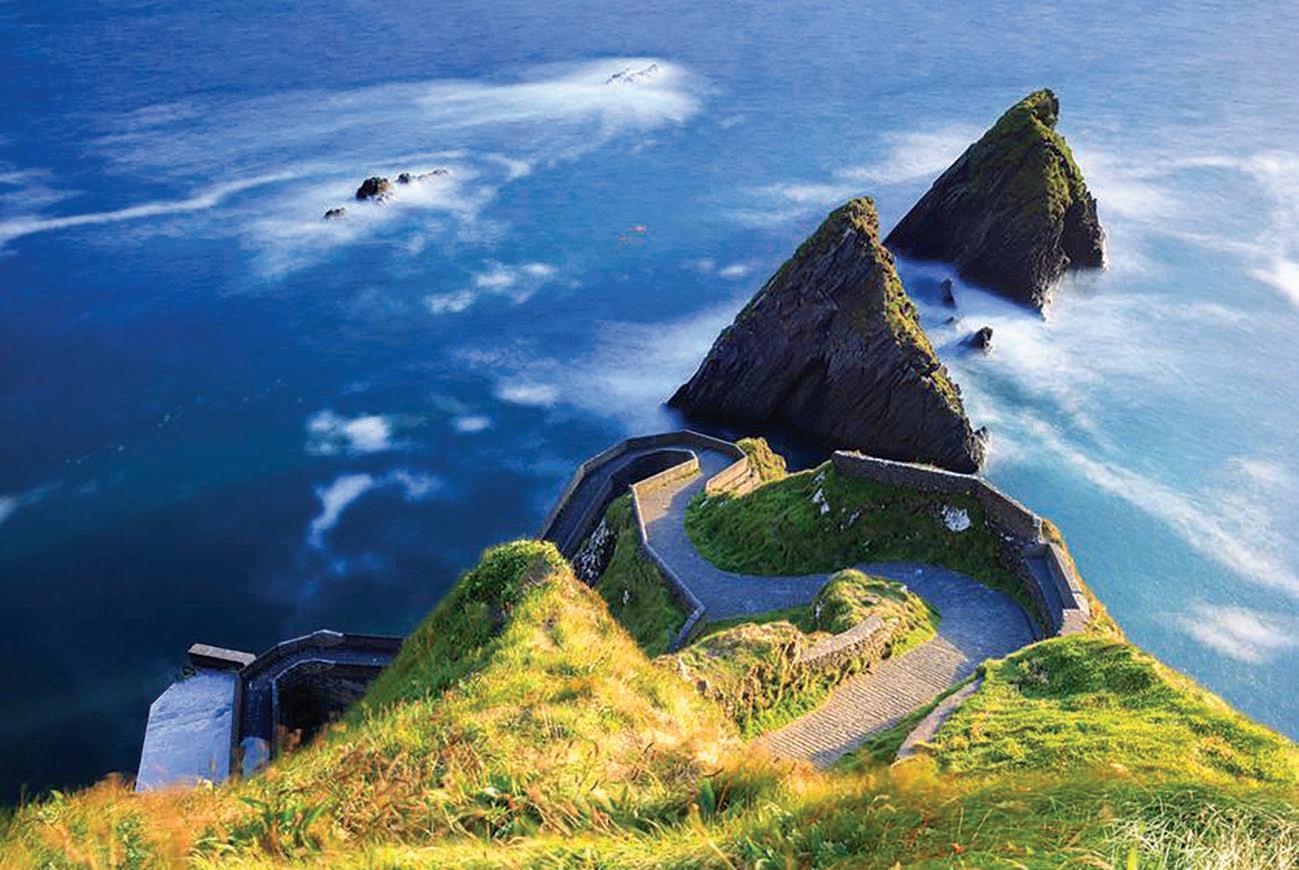


TRAVELLERS heading to Spain will be required to show proof of a Covid-19 booster shot starting next month, the country becoming the latest country to rely on the extra shot.
Starting February 1, most international travellers will be required to show proof they have received a booster dose more than 270 days (about nine months) after the last dose of their initial vaccine series, according to Spain’s tourism site.
As with the initial shots, visitors will have to wait at least 14 days after their booster dose to enter the country.
The new booster dose rule is in addition to the current requirement of filling out a Spain Health Control form, which can be obtained through the Spain Travel Health portal or through apps (on Android or iOS devices).
When in Spain, face masks are required to be worn both in indoor public spaces and outdoors.
Spain is reporting about 64,700 new cases on average each day, according to Reuters, which is a significant decrease from earlier in January.
Meanwhile, Thailand is once again making it easier for tourists to visit with the return of its ‘Test & Go Thailand Pass’ programme, allowing vaccinated international visitors to travel to any part of the country and skip quarantine.
Starting February. 1, Thailand will allow fully vaccinated travellers from any country to apply for the programme up to 60 days before their trip, according to the Tourism Authority of Thailand. To be eligible, travellers must book and prepay for a stay in an approved hotel for two separate nights (on day 1 and day 5), prepay for two PCR tests to take on day 1 and day 5 of their trip, and pre-arrange a transfer from the airport to their hotel.
Travellers must stay in their room on day 1 and day 5 of their trip until they receive the results of their coronavirus tests.
Additionally, travellers will have to arrive with proof of a negative PCR test taken within 72 hours of their departure as well as purchase insurance with at least €50,000 in coverage.
Travellers will have to apply for the program online, which will reopen for applications on February 1, according to the Tourism Authority of Thailand.
Spain, Thailand and that booster shot
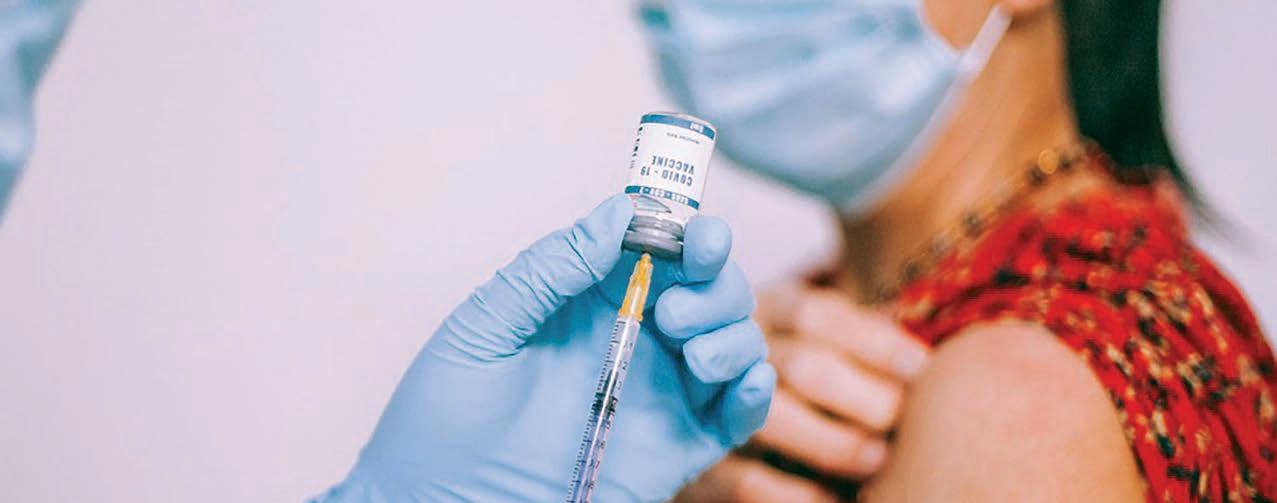
THIS WEEK, in our look at the recently published book of poetry and prose by e Kilkenny Involvement Centre and e Recovery College, we feature poems from Ann McKeon, Sé Nicholson, and Eoghan O’ Driscoll. anks to Grainne Co ey and Dan Ryan for photos.
Much More Than Words
If ever a book deserved the award for ‘ e Perfect Title’ surely that accolade must go to a new compilation of poetry Much More an Words. Indeed its very title describes comprehensively the diversity of the treasures to be discovered within its covers. is volume of carefully crafted poems, interspersed with prose and enhanced with well-chosen images, is the second collection produced by e Involvement Centre Kilkenny and the rst in a joint venture with e Recovery College. e Kilkenny Observer Newspaper is delighted to promote the work of e Involvement Centre and e Recovery College, and so, will publish a selection of their work over the coming months. ‘Much More Than Words’ can
be purchased at the following Kilkenny outlets: Bargain Books, The Butterslip Khans Bookshop, James’ Street & The Book Centre, High Street. Price: €10
Anne McKeon
e Forest
e French poet Guillevic said: When every one of your days, hours, moments are sacred to you – when the earth and you, the space with you is sacred to you all the days of your life – then will you dwell in the eld of glory1 Our encounter with the forest was welcoming, silent, cool and shady from the mid-day sun and it brought Guillevic’s poem to life. We walked into this cathedral of trees and light, silence and shadows, home to so many di erent forms of life. I wonder would one be able to count the beings that lived there? Under the canopy of trees, light ltered in through the leaves as it does through stained glass windows and cast its mottled rays into the shade where spiders dwelt in complexly woven webs of gossamer. Pine needles lay in pile upon pile, which years of autumn winds and winter snows had placed there.



Being present became the only thing we could be. Every moment was ‘now’. Nothing was in the past and there was no future. Pure ‘being’ came upon us and we didn’t need to tell each other what was happening – we had merged with the ‘now-ness’ of the forest and its life. If we go quietly we might see a deer, I said. We saw no deer but a sign that said BEES AT 500m. As we went past the sign we could see no clear path ahead of us at rst. en placing one step in front of the other we walked through the veil of green pine, oak and sweet-chestnut branches which gave way to our footfall. e path became full of light because of an opening in the forest roof, and rays of sunshine lit the ground where about twenty mauve Pyramidal Orchids stood among tall grasses creating a welcoming surprise. e encounter between us was, as described by Guillevic, sacred. We were captivated by their presence as we watched them soaking in the sun that illuminated this clearing. ey were swaying gently with a light breeze that wafted its way through the trees. How old were their years? For how many winters had they remained dormant in the soil of this sacred ground? How many springs had the promise of warmer sun given them the energy to break through from the womb of decomposed pine needles, leaves and grass? How many summers had they surprised the wandering travellers such as us two, or even the forest hermits of ancient times? Just beyond the orchids was the bee hive. A marvellous relationship existed between this hive and the owers. Each ensuring the continuation of the other as the orchids were pollinated and the bees were fed with the nectar of these and other wild owers in the surrounding countryside. e hive was quiet. We could see very little movement. We knew that inside the wooden box were thousands of worker bees, cleaning the hive, feeding the queen, building chambers for the new larvae and awaiting the return of other workers with the pollen from that day’s harvest. What a wonderful balance of give and take was in this forest of trees, plants, animals and insects. We had no part to play in it except as observers. My companion said to me, I think this must be one of the loveliest places we have ever been! -----------------------------------------------------------------------1 Translated and paraphrased from the poem Ouverture that appeared in Creuser Notre Source Intérieure – Approche poétique et interreligieuse. Poèmes de Guillevic. Journées de ressourcement 1999, Frère Bernard-Joseph, Abbaye d’Orval, Belgium.
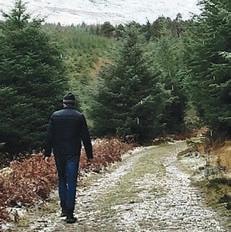
Se Nicholson
No Hope Brings Hope
When I can’t face the day because it’s too much, too big, a wall that cannot be climbed. When I feel alone in your company, untouched by your love and care. When the light at the end of the tunnel is an oncoming train, it’s closing in, there’s no escape, the sun shines but I cannot feel it. When there is no point but we don’t wish to hurt others by ending it all. Or is it the sun shining in the morning when I get out of bed and have the strength to keep going? When a smile lifts my spirits and you’re there for me, being active and focussed And the pleasure of just doing. Being grateful for the simplest of things, A prayer said in church even when it’s the last resort, when I stop running from myself and see there is no fear. Now I have all I need, I have peace.
Se Nicholson
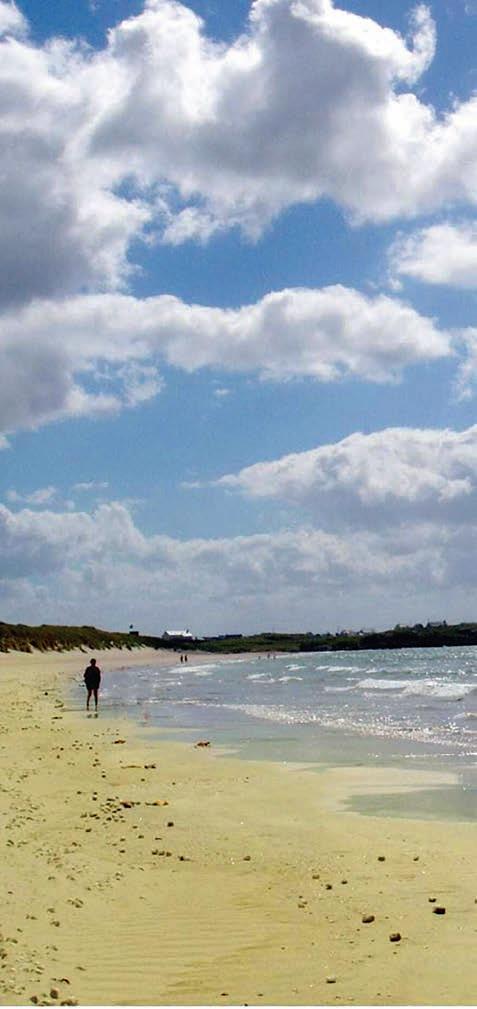
Eoghan O’Driscoll e Crow
I watch the crow From the window of the ward . e expected storm had come. e crow knew this Long before the weather man. e crow’s god is the weather Open to o erings. He knows I am watching him . When I was a boy, the crow ate from my hand. Now he moves o Into the wild wind and rain. “Relax,” the nurse said, As I moved o into a storm all of my own.
Eoghan O’Driscoll
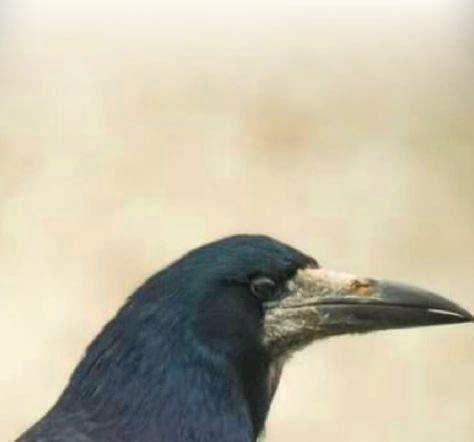
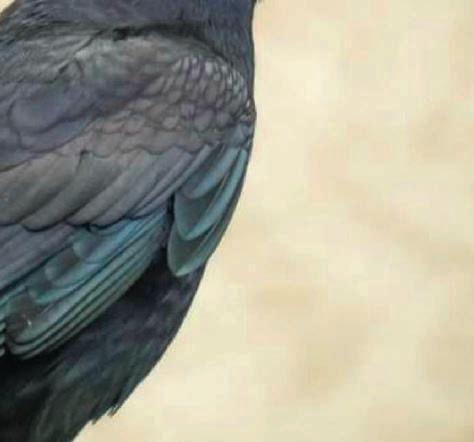
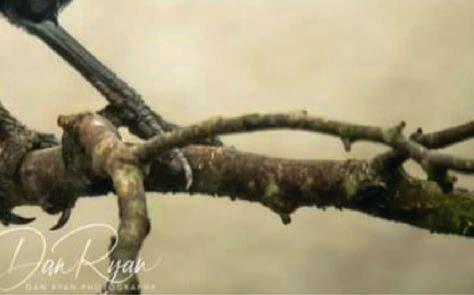
World Cup fundraiser for our Powerchair footballers
A FUNDRAISING campaign has been launched to keep alive Team Ireland’s dreams of competing at the Powerchair Football World Cup in Australia later this year. e Association of Irish Powerchair Football (AIPF) is hoping to send a 25-strong delegation to the tournament, comprising coaching sta , players and carers.
With poor Government funding, a GoFundMe campaign is seeking to raise €100,000.
Powerchair football is a mixed-gender adaptation of the running game played in specialised wheelchairs.
Ireland, who are ranked sixth in the world, secured a World Cup place after winning bronze at the EPFA European Nations Cup in 2019.
AIPF Chairman Donal Lawlor said: ‘’Our goal has always been to represent Ireland at the highest level and we have nally earned the opportunity to do so. It is a once-in-a-lifetime opportunity to inspire other disabled people in Ireland that they too can achieve great things on a global stage.
“To get to this point we have had to sacri ce money from our own pockets and rely on donors and well-wishers for nancial support, which has not been easy.”
AIPF’s Secretary Donal Byrne said: “ e funds cover expenses for the delegation. We have seven players, seven care assistants and coaching sta . en there is the logistics of the actual equipment. We have to bring the players’ everyday chairs as well as their sports chairs. e cost of ights is probably going to be the biggest bill that we will face.”
Team Ireland began World Cup preparations last October following the easing of Covid restrictions.
Team member Aoife McNicholl said getting to Australia would be a massive achievement for the team.
“Having an interest in sports all my life but not having the opportunity to play, to nally get a chance to get on the pitch with my teammates and play would be amazing. Wearing the green jersey and seeing all the support from family and friends would be amazing,” said Aoife, who has spinal muscular atrophy and got involved in the sport as a child.
Farmers told to get right advice on partnership
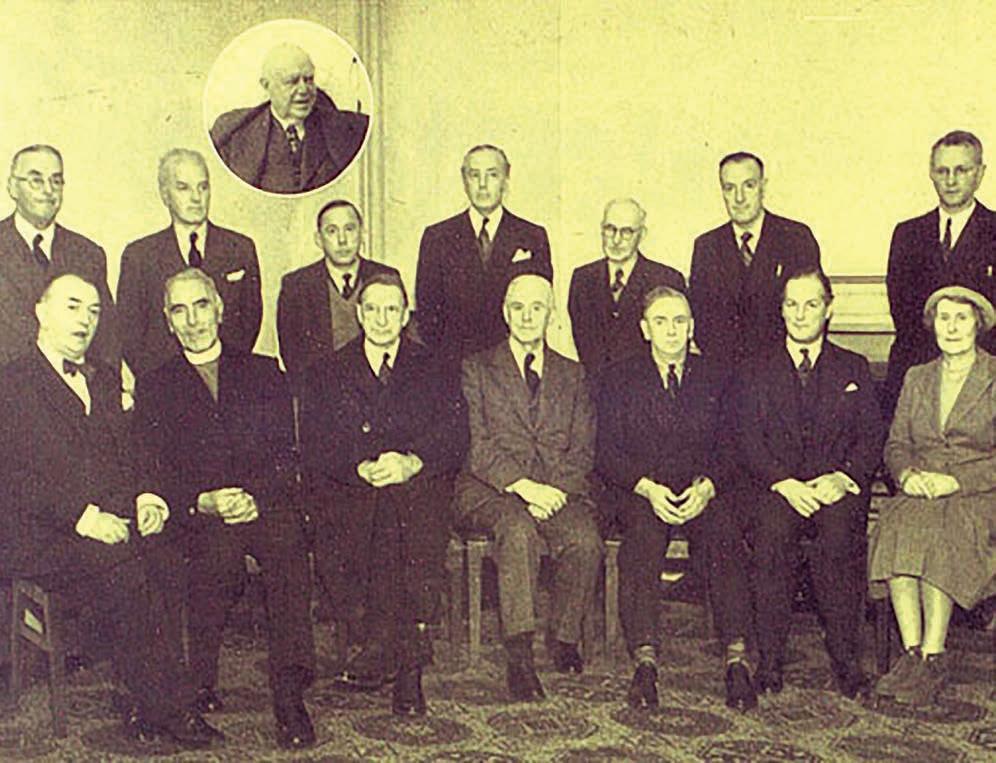
WITH the February deadline looming, ifac, Ireland’s farming, food and agribusiness specialist professional services rm, is advising Kilkenny farmers that getting the right advice is crucial for registered farm partnerships.
Philip O’Connor, Head of Farm Supports at ifac said: “Changing farm structures is a big decision for any farmer and all Department of Agriculture, Revenue and legal aspects should be reviewed fully before entering a farm partnership.” According to ifac, once your accountant and /or solicitor have examined the structure and it makes nancial, succession and legal sense, the next step is to deal with the Department of Agriculture. e deadline for applying for a Registered Farm Partnership number is February 11. While you can 100% be in a registered farm partnership after this date, your BPS will remain in your name for the 2022 scheme year. A registered farm partnership comes with lots of advantages. e main ones are:
Department of Agriculture
• As a registered partnership, you can avail of various grants, including a double ceiling for TAMS/investment on the farm.

Tax
• Enhanced stock relief: 50% stock relief as opposed to the standard 25% • 100% stock relief for youngtrained farmers is still available for those who are partners • Will achieve the active farmer status for succession.
succession and expansion • Non-family partnerships are an e ective amalgamation of skills and resources and o er helpful economies of scale.
Women farming in partnerships
We are all aware that many women play a signi cant role on Irish farms, from the day-today farming activities to farm management and nancial oversight of the business. Unfortunately, this is often uncredited and under-recognised. e CSO Labour Force Survey 2020 showed that 15% of workers in the primary agriculture, forestry, and shing sector were female - the highest since 2010, yet only 4% of farms are registered in joint male and female names.
Said Philip O’Connor: “It’s important that women are encouraged and supported to become o cially recognised for the work they do on farms and forming a registered farm partnership could be the rst step.” By farming in partnership, it could lead to additional bene ts such as:
• Where land is jointly owned it ensures both partners meet the farming test (for capital gains tax purposes, lands need to be owned and farmed) • A contributory pension in one’s own right can be achieved. • Over the past few years, farmers have created “Joint Herd
Number” structures to qualify for the 2015 National Reserve and 2015/16 Young Farmers Scheme without seeking either legal or taxation guidance. • e question arises in individual cases as to whether a partnership has been created and if so, what are the potential consequences? THE Arts Council is celebrating 70 years since its rst meeting 0n January 25, 1952. Over the course of 2022, to celebrate those 70 years supporting the arts, the council will announce a diverse programme of events aimed at bringing art into the home of every citizen in Ireland, inviting debate around the future of the arts, connecting individual artists’ stories to audiences around the country, all supported by a vibrant social media campaign.
Speaking today, Prof. Kevin Rafter, Chair of the Arts Council said: “In the past 70 years, the Arts Council has seen its funding increase from an initial £1,100 in 1952 to a record level of €130 million in 2021 and 2022. is is a signal of the central importance of the arts to Irish society and that has been particularly recognised during the Covid crisis. is anniversary year will be important in ensuring the arts remain central to our national recovery.”
Maureen Kennelly, Director of the Arts Council said: “In 1952 we supported just four art forms – architecture, music, sculpture and theatre. at has now expanded to cover the disciplines of circus, dance, lm, literature, opera, street arts & spectacle, traditional arts, and visual arts. e potential for the arts sector is immense and our Paying the Artist, equality, human rights & diversity, and spatial policies will enable us to build the brightest possible future for artists and audiences.” e rst council meeting began at 3:30pm on Friday 25th January 1952 at number 45 St. Stephen’s Green. e meeting was attended by (pictured) seven people; Patrick J Little TD (appointed Director); Mon Pádraig de Brún; Dr. Richard Hayes; Mr. omas McCreevy; Mr. John Maher; the Earl of Rosse.
Dr William O Sullivan was appointed secretary and Dr Alfred Chester Beatty sent his apologies. In an unusual sign of consensus, the council meeting was addressed by both Taoiseach John A. Costello and opposition leader Eamon de Valera. e presence of both men was a signal of how important public funding of the arts through the Arts Council was considered.
The Arts Council to celebrate its 70th birthday!
Closing date looms for Laois Kilkenny fund
EIRGRID, the national electricity grid operator, is reminding community groups and not-forpro t organisations that there is still time to submit grant applications for the Laois Kilkenny Community Bene t Fund. e deadline for submission of applications is Tuesday, February 1, at 2pm. e Community Bene t Fund has been established with a total value of €511,500, with an initial €204,600 available for community groups to apply for.
Priority will be given to groups and not-for-pro t organisations in communities adjacent (within 3km) to the line in Laois, including Coolnabacky, Timahoe, Ratheniska, Spink and Ballinakill and in Kilkenny, Ballyragget, Ballyouskill and Tinnalinton.
Earlier this month EirGrid provided a virtual workshop and one-to-one clinics on writing a successful grant application. ese workshops provided additional supports for potential applicants.
Speaking about the fund, EirGrid’s Chief Infrastructure Of cer, Michael Mahon said: “EirGrid is stepping up to ensure everyone has a reliable, high quality standard of electricity supply. And, while developing essential infrastructure to ensure this, EirGrid wants to make sure communities and groups are supported in their e orts to increase public wellbeing.”
“We know that when communities work together great things can be achieved, and the Laois Kilkenny Community Bene t Fund is there to help make projects and initiatives a reality.”
You can download an application at https://eirgridcommunityfund.submit.com or for more information contact Avril Wilson at avril.wilson@eirgrid. com.


The Spollen family




JJ Ryall and Seamie Fogarty.
Sibhan Minnock and Cian Courtney
About WITH Danny Lahart Out &
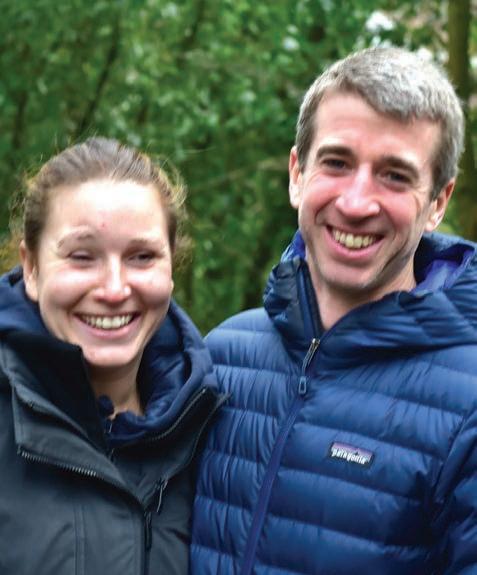
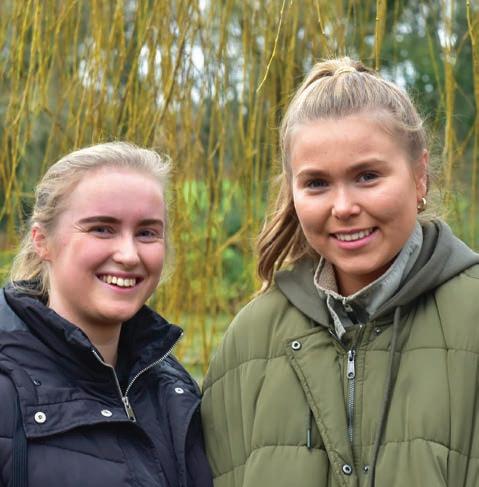
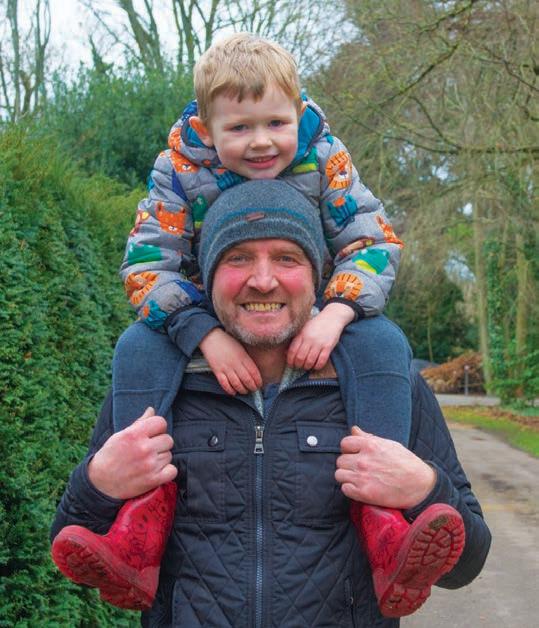

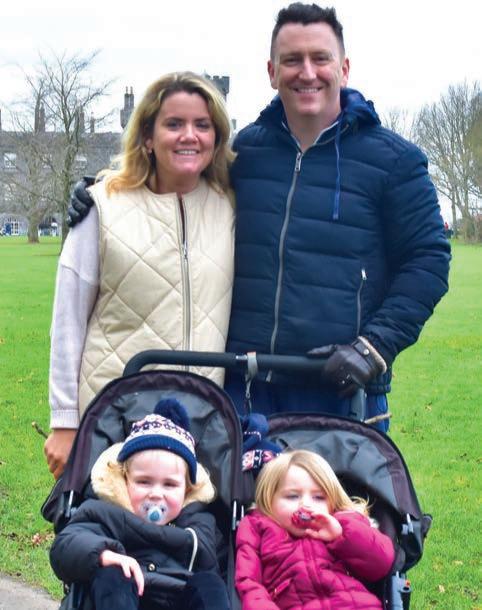
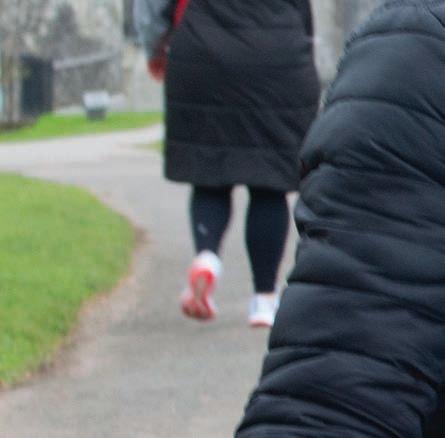
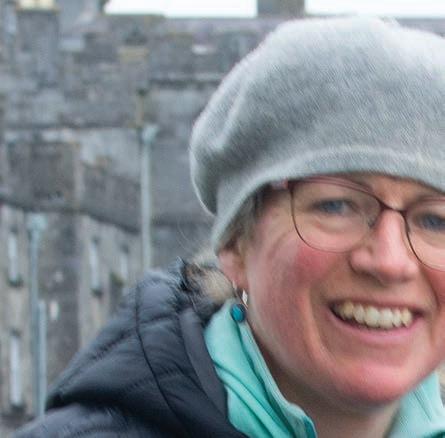
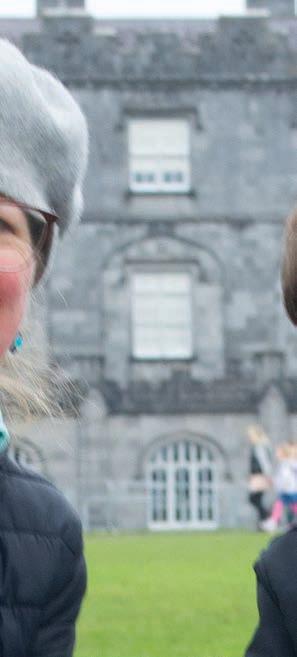
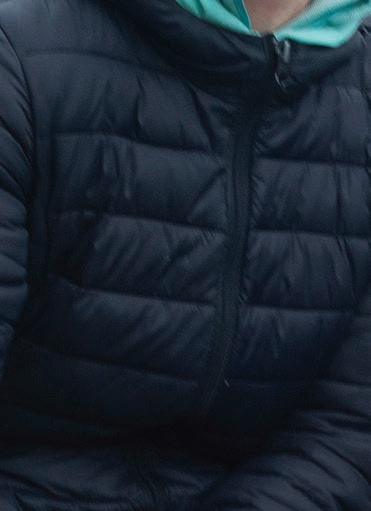
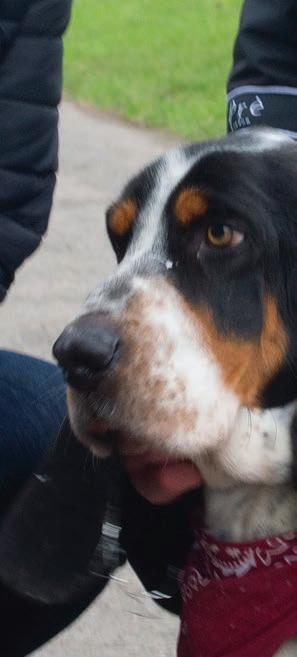
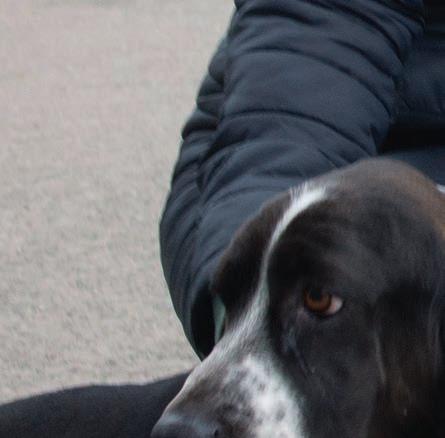
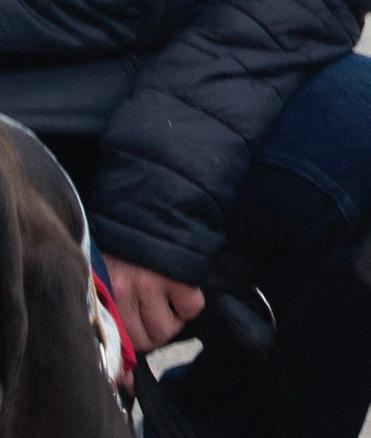
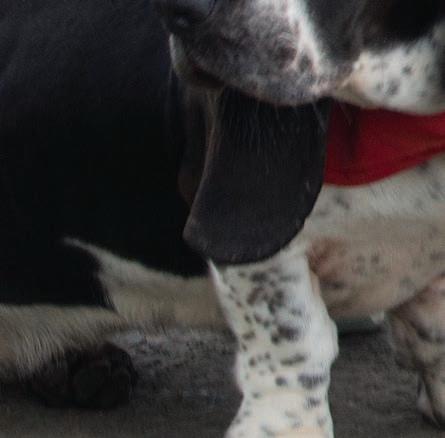



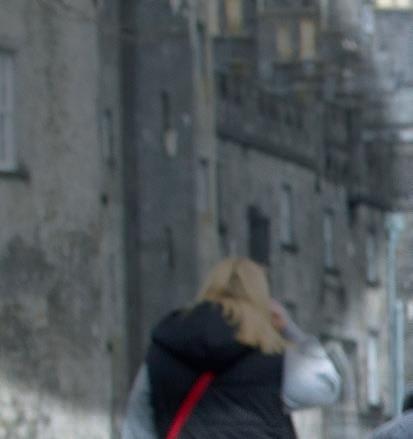
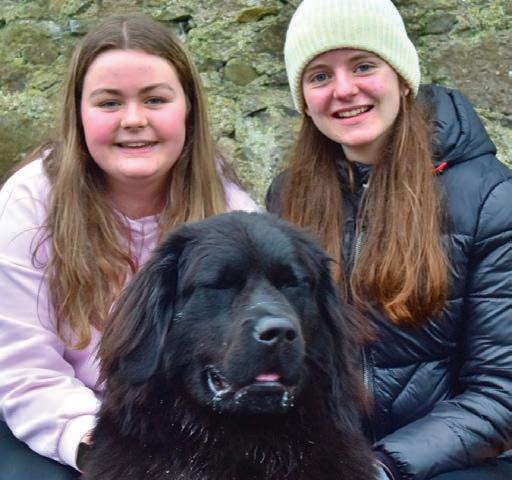

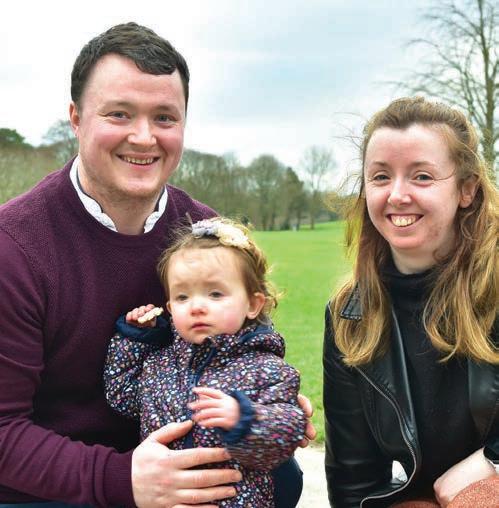

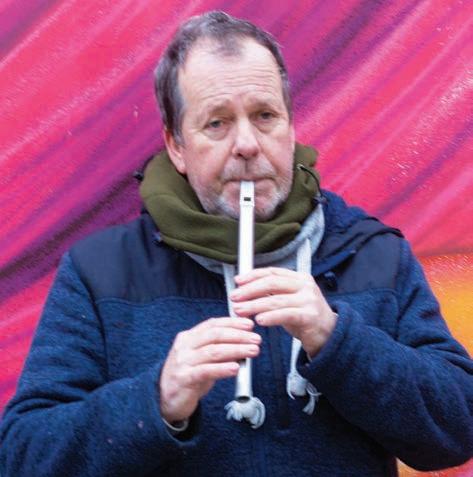
Noel Brophy playing a few tunes in Kieran St The Maher family
Jonathan, Emily and Darby Wright
The Gittens woth their grandson Cathal and Tagdg De Courcey Liz O’Leary and Maeve Kenny
Aisling Prendergadt and Rachel Brennan
